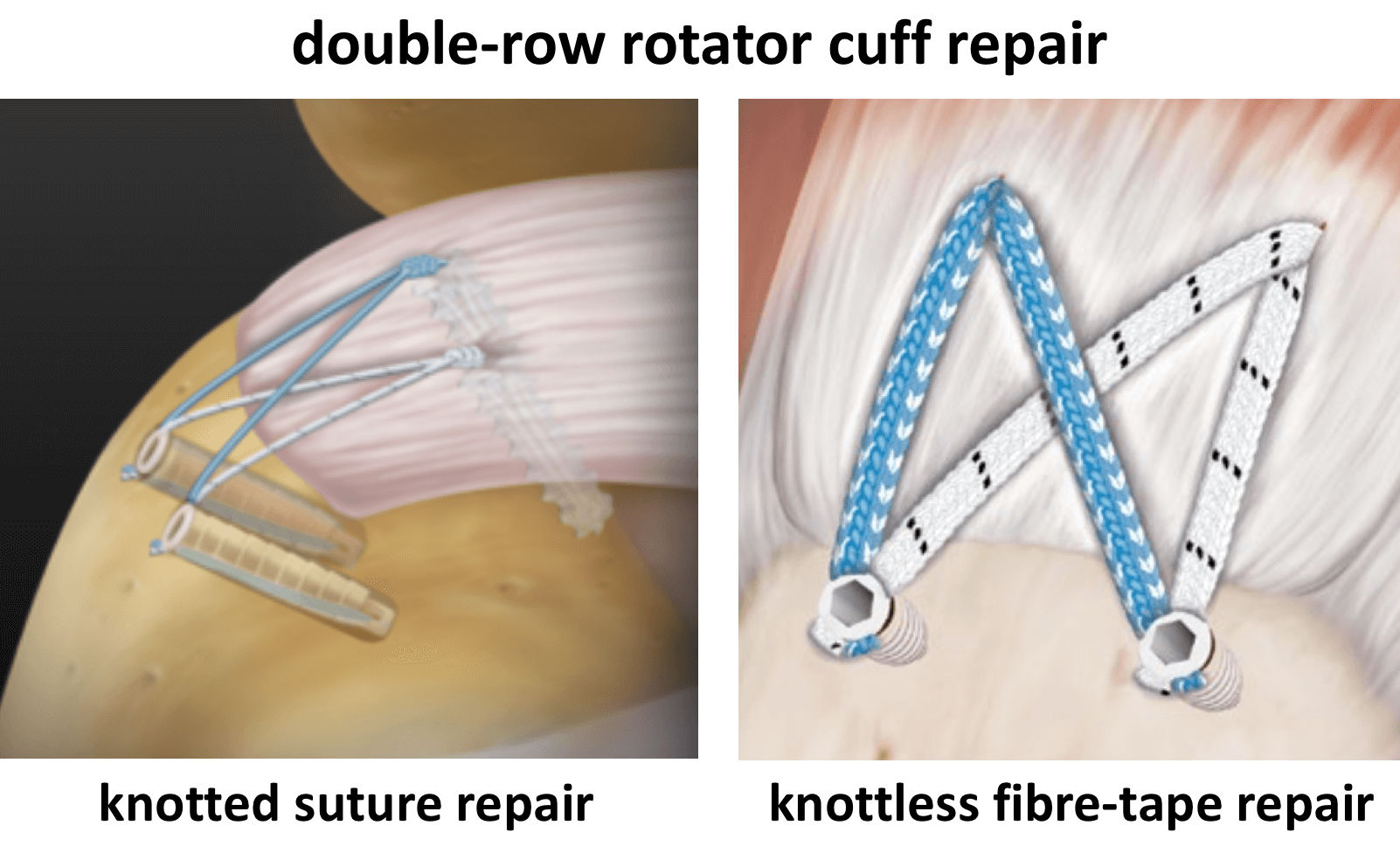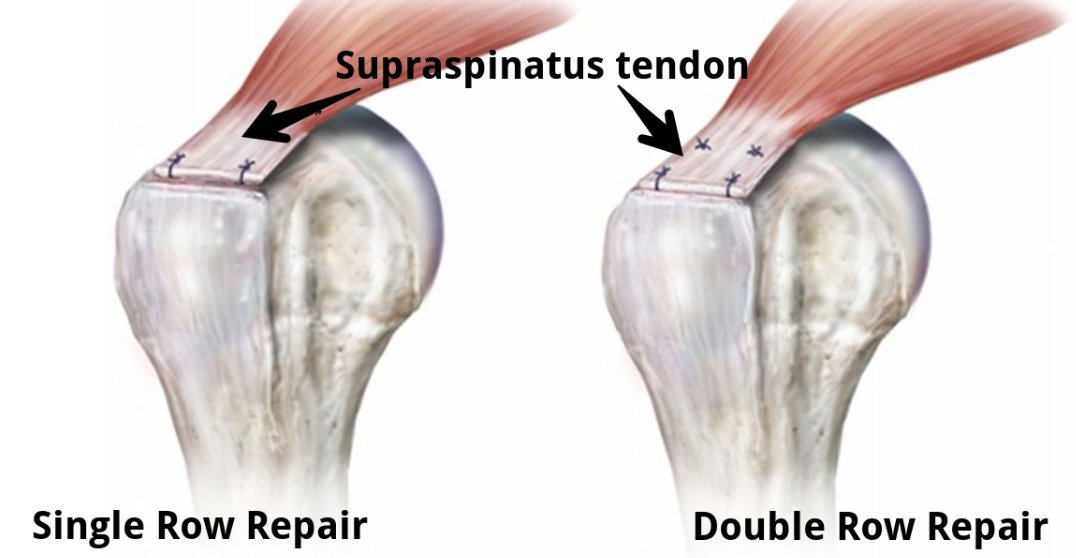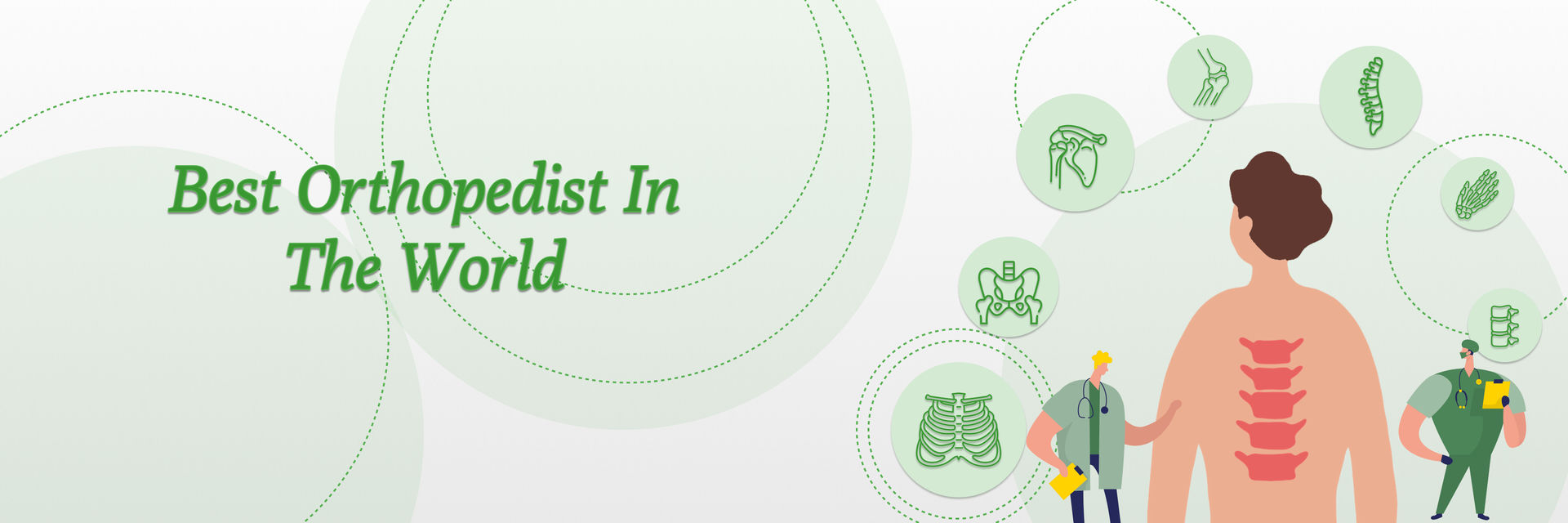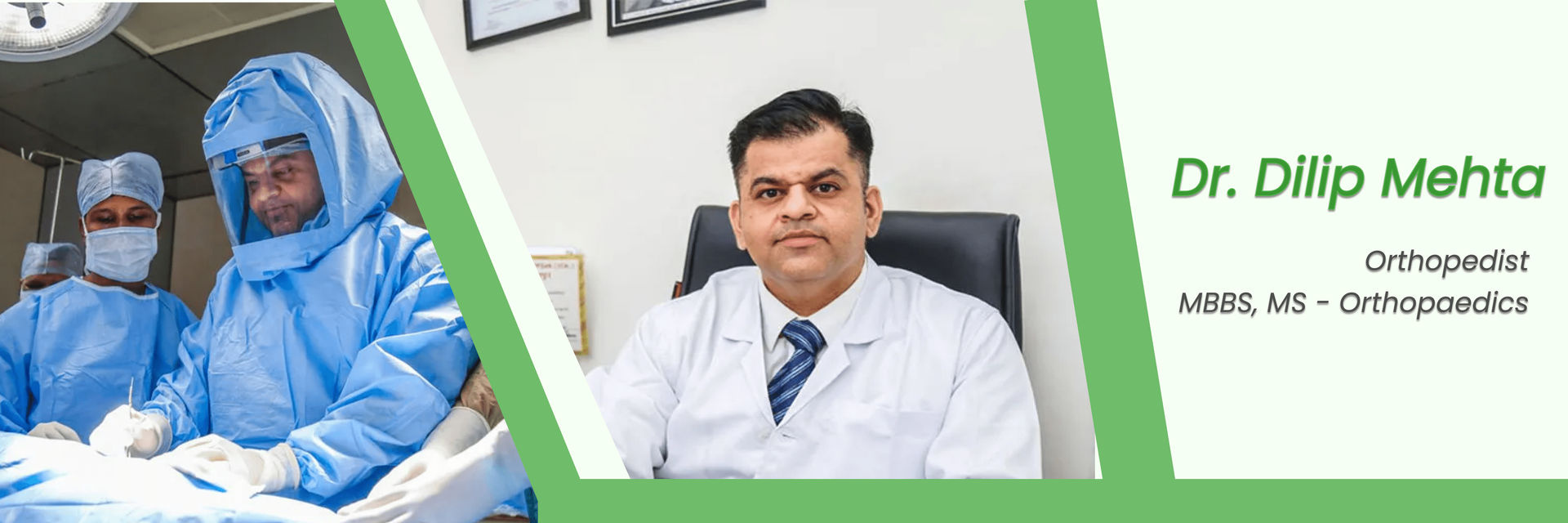Overview

A procedure used to treat a tear in the rotator cuff, which consists of a group of tendons and muscles that stabilize the shoulder joint, is known as a double-row rotator cuff repair. It is an advanced procedure that aims to deliver a more secure and durable repair as compared to single-row techniques.
Your health is too important to ignore – schedule your appointment now.
Confused between Single and Double row rotators? Let’s have a look at both!
Difference between Single vs Double-Row Rotator Cuff Repair

Single-Row Repair | Double-Row Repair | |
Technique | Reattaching the tendon with a single row of sutures or anchors | Reattaching the tendon with two rows of sutures or anchors |
Purpose | Treat smaller tears or cases with good tissue quality | Address larger tears or complex cases, enhance repair strength and stability |
Tendon-to-bone Contact | The limited contact area between tendon and bone | An increased contact area between tendon and bone |
Restoration of Anatomy | May not fully mimic the natural attachment of the tendon to the bone | Closer approximation of the natural attachment of the tendon to the bone |
Repair Strength | Generally provides sufficient strength for smaller tears or good tissue quality | Potentially stronger repair due to additional sutures or anchors |
Surgical Complexity | Simpler technique | Considered an advanced technique |
Rehabilitation | Similar rehabilitation protocols compared to the double-row repair | Rehabilitation may be more intensive with an emphasis on early motion and strength exercises |
Surgeon Preference | Preferred for certain cases based on tear size and tissue quality | Preferred for larger tears, complex tears, or cases where a more secure repair is desired |
The decision between a single-row repair and a double-row repair ultimately comes down to the extent of the rip, the quality of the tissue, the patient's characteristics, and the surgeon's experience. An orthopedic surgeon will evaluate the exact ailment and choose the best course of action for each unique situation.
According to experts at Healthcanal,
“Depending on the type of tear, the double row may be more effective. If the tear size is larger than 3 cm, then the double row repair showed better shoulder strength.”
So, let's have a look at who can be the candidates for double-row rotator cuff repair.
Who is a candidate for double-row rotator cuff repair?
Double-row repair procedures are superior to single-row repair approaches in terms of tendon-to-bone mending and biomechanical strength. For patients, this may result in more stability and improved functional results.
The eligibility for double-row rotator cuff surgery is determined by a number of parameters that an orthopedic physician evaluates. Here are the following elements that may affect the decision to seek double-row rotator cuff repair:
Tear Size
For bigger rotator cuff rips, such as major tears or those involving a significant amount of the tendon, double-row repair is frequently taken into consideration This approach may be helpful in certain situations since the extent of the rip might affect the stability and strength of the repair.
Quality of Tissue
The quality of torn tendons and their surrounding tissues is important. A double-row repair could be favored if the tissue is damaged or of low quality, such as thin, ragged, or degenerated since it might improve tissue-to-bone contact and perhaps improve healing results.
The complexity of the Tear
A double-row repair may be beneficial for complex rotator cuffs rips, such as those involving many tendons or a retracted tear. The double-row technique's extra sutures or anchors can assist address the intricacy of the rupture and offer a more secure and stable repair.
Patient Characteristics
The patient's age, degree of exercise, general health, and expectations are all taken into consideration. In circumstances when a more lasting repair is preferred, the surgeon takes into account whether the patient will profit from any possible benefits provided by a double-row repair, such as greater strength and stability.
Are you aware of the procedure followed for a double-row rotator cuff repair? Let’s find out.
What is the procedure for double-row rotator cuff repair?
The following stages are usually involved in a double-row rotator cuff repair procedure:
1. The patient is put under anesthesia, which may be either a general or a local anesthetic along with sedation. The decision is based on the surgeon's and patient's preferences.
2. To provide access to the shoulder joint, the patient is positioned on the operating table, often in a beach chair or lateral decubitus position.
3. The surgeon creates a number of tiny incisions around the shoulder and inserts a small camera called an arthroscope into one of them. This makes it possible to see the components of the shoulder joint.
4. The surgeon looks at the torn rotator cuff tendon and assesses the size of the tear, the tissue's quality, and any damage to the surrounding tissues that may have resulted. The tendon's torn or frayed edges are carefully cleaned up by getting rid of any debris or scar tissue.

5. The attachment location of the ruptured tendon is close to where small biocompatible anchors are placed into the bone. The design and size of the tear determine how many anchors are needed.
6. The damaged tendon is stitched together using sutures that are fastened to the anchors. On the upper and lower surfaces of the tendon, respectively, two rows of sutures are typically made. This double-row arrangement aids in simulating the tendon's organic connection to the bone.
7. Reattachment of the tendon involves the surgeon pulling on the sutures to reposition the torn tendon on the bone where it originally belonged. The tendon is subsequently fixed in place by tying the sutures down. The tendon's connection to the bone is repaired during this procedure.
8. To provide the best results, the surgeon makes any required changes after confirming the stability and tension of the repair.
9. The incisions are stitched or stapled shut, and a sterile dressing may be used to cover the surgical site.
The patient is sent to a recovery area after the surgery, and detailed post-operative instructions are given.
Physical therapy and other forms of rehabilitation are frequently advised to speed up the healing process, regain shoulder strength and mobility, and improve long-term functional outcomes.
Do you know?
It is crucial to consult with an orthopedic surgeon who specializes in shoulder injuries and repairs.
What is the recovery time for double-row rotator cuff repair?
The amount of time needed for recovery following a double-row rotator cuff surgery might vary based on the patient and a number of conditions. The healing process often takes many months to a year.
Patients may have pain and discomfort in the first few days following surgery, which may be controlled with pain medication that has been recommended. Typically, a sling or brace is used to immobilize the shoulder in order to preserve the repair and encourage recovery. The emphasis during this initial phase is on relaxation and letting the repaired tendon recover.
Around the 6-week mark, under the supervision of a physical therapist, patients can start doing easy range-of-motion exercises. While guaranteeing the stability of the repair, this stage tries to progressively restore mobility. The patient may continue to use a brace or sling as required.
Between 6 and 12 weeks following surgery, the rehabilitation program advances to increasingly active strengthening and range of motion activities. The goal of physical therapy sessions is to recover shoulder muscular control and strength. The patient may eventually stop wearing the sling or brace and begin performing simple everyday tasks with their arm.
Between 3 and 6 months, patients often notice a considerable reduction in discomfort and improvement in shoulder function. With progressively difficult strengthening exercises and functional activities created specifically for the patient's objectives, the rehabilitation program gets more intense. During this stage, a gradual return to work and activities may be feasible with any required changes.
After 6 months, strength, flexibility, and shoulder function are still being worked on. In accordance with the surgeon's and physical therapist's advice, patients continue with the recommended rehabilitation program and eventually resume sports and other strenuous activities.
According to experts at Helathcanal,
“It is important to attend physical therapy following rotator cuff surgery to work on regaining strength and range of motion safely and the recovery timeline will vary from patient to patient. Full recovery typically takes four to six months but may take longer than that to return to any heavy lifting. If the tear is extremely large, it may take upwards of 12 months to regain range of motion and strength.”
Take the first step to recovery. Get in touch with us for your treatment.
Ever wondered how much time it would take to regain shoulder function if one goes for a double-row rotator cuff repair?
Will you regain full shoulder function after double-row rotator cuff repair?
Restoring shoulder function and reducing discomfort brought on by the rotator cuff rupture are the main objectives of a double-row rotator cuff repair.
The level to which full shoulder function is recovered varies from person to person, despite the fact that many patients notice a considerable improvement in shoulder function following surgery.
Following rotator cuff repair, the shoulder joint is normally progressively given back its range of motion, strength, and stability through a systematic rehabilitation program that includes physical therapy exercises.
The final result following surgery relies on a variety of individual circumstances, so it's important to set reasonable goals and pay strict attention to the orthopedic surgeon's and physical therapist's instructions.
To optimize shoulder function and improve recovery prospects, they will track progress, offer guidance on appropriate activity levels, and personalize the rehabilitation program.
Know the success rate of double-row rotator cuff repair before opting for it!
Double Row Rotator Cuff Repair Success Rate
- The size and severity of the rotator cuff tear
- The precision of the repair
- The patient's adherence to recovery guidelines
- personal healing capacities
can all affect the success rate of a double-row rotator cuff repair.
Although it is difficult to give a precise success percentage, research has demonstrated that double-row rotator cuff restoration has positive results.
Double-row repair procedures are superior to single-row repair approaches in terms of tendon-to-bone mending and biomechanical strength. For patients, this may result in more stability and improved functional results.
Double-row rotator cuff repair, as a whole, is regarded as a cutting-edge surgical procedure that seeks to deliver a more anatomically precise and secure repair. The success rate of double-row rotator cuff surgery is often high, and many patients report considerable improvements in shoulder function and pain reduction.
Your well-being is our priority - call us to book your appointment today.
References:
https://bmcmusculoskeletdisord.biomedcentral.com/
https://www.ncbi.nlm.nih.gov/






